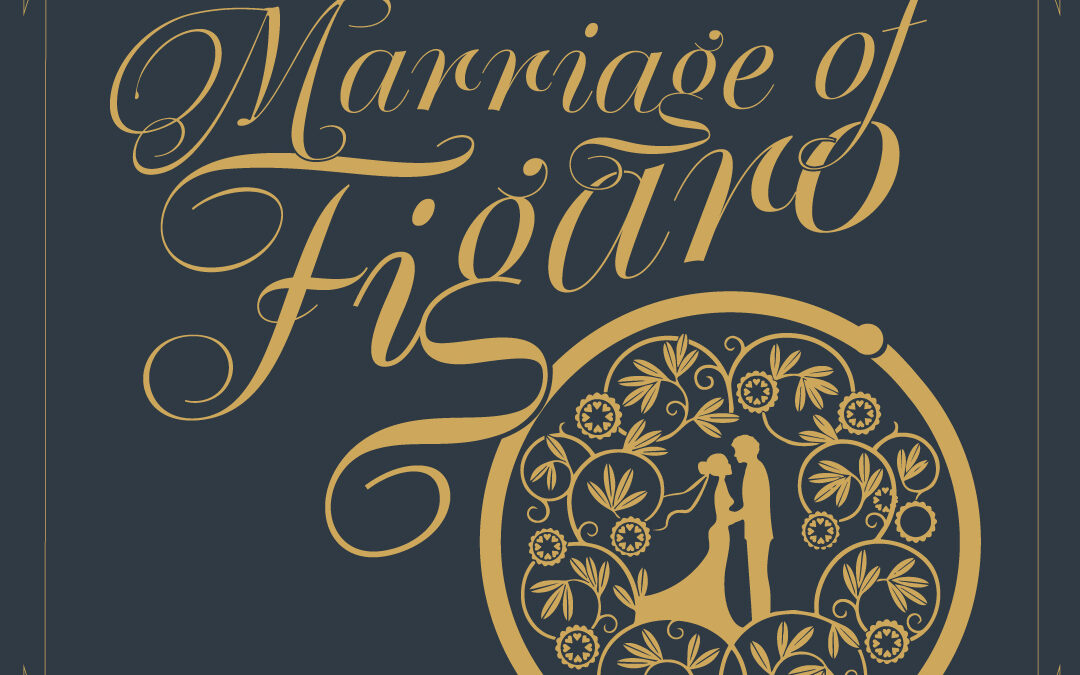UNL Opera presents
THE MARRIAGE OF FIGARO
Figaro, the Count’s valet, is to be married today to Susanna, maidservant to the Countess. But there’s one little problem. The Count has designs on Susanna, and he is prepared to use all the power of his position to prevent the wedding from taking place. The stage is set for a battle of wits between servant and master, between husbands and wives, in a whirlwind of mistaken identities, captivating intrigue, and hysterical plot twists, all concluding in a miraculous devotion to the power of human forgiveness and love. There is never a dull moment in Mozart’s most popular opera, as it overflows with the composer’s genius at every turn.
When Mozart contemplated an operatic adaptation of Beaumarchais’ play Le Mariage de Figaro, Austrian Emperor Joseph II had just banned the comedy from the Viennese stage on the grounds that the playful trickery of servants outsmarting their masters was offensive and subversive. Years later, Napoleon would remark that Beaumarchais’ Figaro was the “first stone flung in the French Revolution.” In the musical hands of Mozart, however, The Marriage of Figaro ultimately becomes a miraculous celebration of the all-healing power of love. The Marriage of Figaro is as funny, as moving, and as relevant today as when it premiered in 1786.
UNL Opera’s production will feature a stylish 1920’s setting. While Figaro is relevant to all times, there are some interesting parallels between the post-WW I era and the opera’s late Enlightenment origins. In the United States there was an optimism in the 1920’s: the “war to end all wars” was over and the possibilities of wealth from commercial enterprise seemed limitless. With that optimism, many Americans hoped for a more equitable future, particularly between the sexes, where all would flourish. Mozart’s women in this opera are all smarter, wittier, and more perceptive than any of their male counterparts. They burn with intelligence and a spirit of independence, akin to their progeny of the 1920s who were empowered by the 19th Amendment, and who boldly enjoyed rising hemlines. The decade of the twenties was also an era of continued interest in classicism even in a period that emphasized progress toward the future. The Art Deco style with its homage to classicism is in harmony with Mozart’s 18th century balanced musical structures. Additionally, Enlightenment philosophy embraced a faith in the perfectibility of mankind, which resonates with the belief in the future held by many American sectors of the 1920s. Is it perhaps this forward-facing faith in the potential of human beings that empowers the Countess to forgive her repentant husband as the opera reaches its rapturous close?
UNL Opera continues its rich and ongoing collaboration with the Johnny Carson School of Theatre and Film with this production. The magnificent setting of the Count’s estate is conceptualized and designed by JD Madsen, Professor and Head of Design/Technology in The Carson School at UNL. Stylish costumes are designed by MFA in Theatre Arts candidate Camille Lerner, and the evocative lighting is created by MFA in Theatre Arts Candidate Francisco Hermosillo III, with properties and painting by Carson School alum Jill Hibbard. Dr. Tyler Goodrich White conducts the UNL Symphony Orchestra, and William Shomos, Director of UNL Opera, stages the production. All performers in this production are current students in the UNL Opera program.
Friday, November 11
Kimball Recital Hall at 7:30 p.m.
Sunday, November 13
Kimball Recital Hall at 3:00 p.m.
Pre-performance talks 45 minutes before curtain in the lower lobby of Kimball Hall.
Tickets: $20 adults, $10 students/seniors,
Tickets available online at go.unl.edu/GKSOMtickets or by calling (800) 504-4849.

